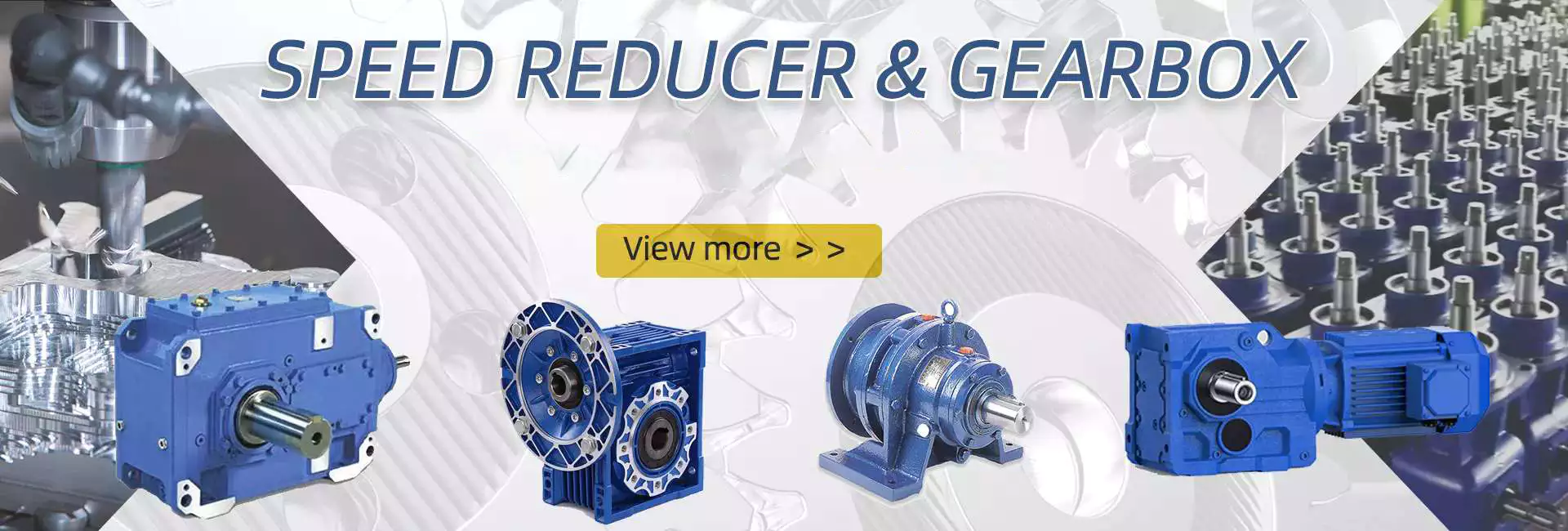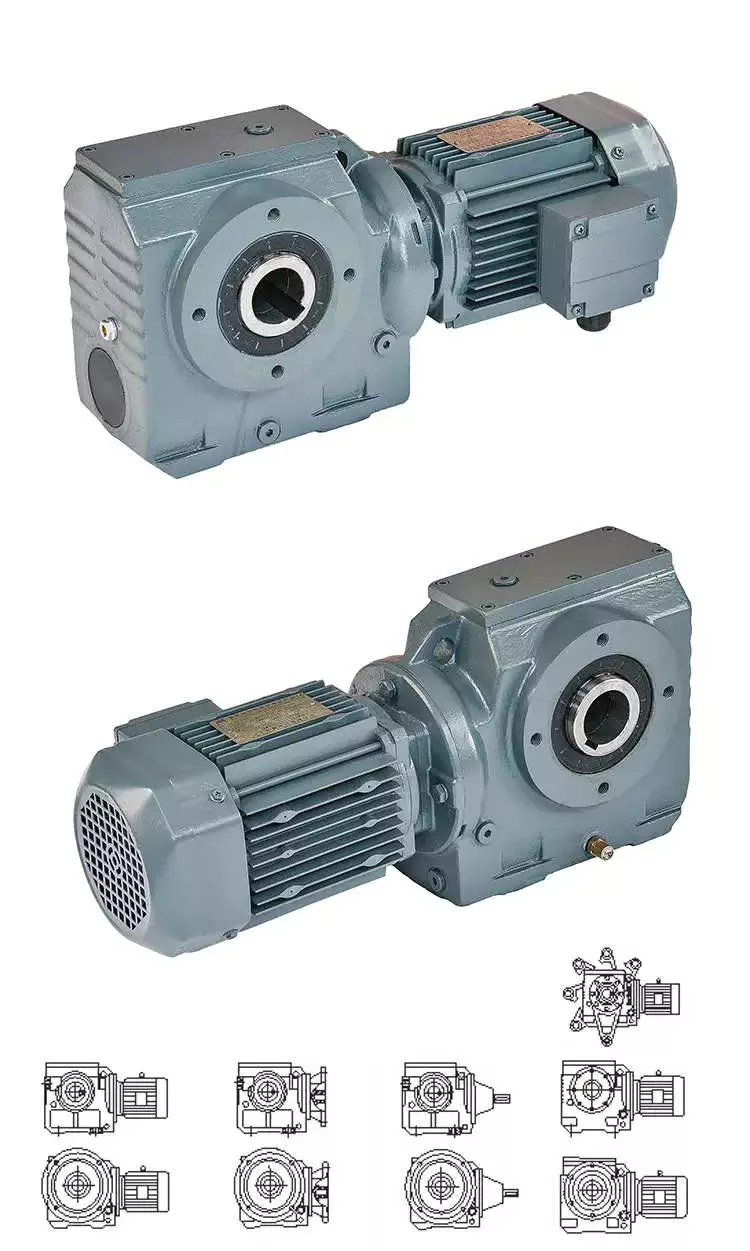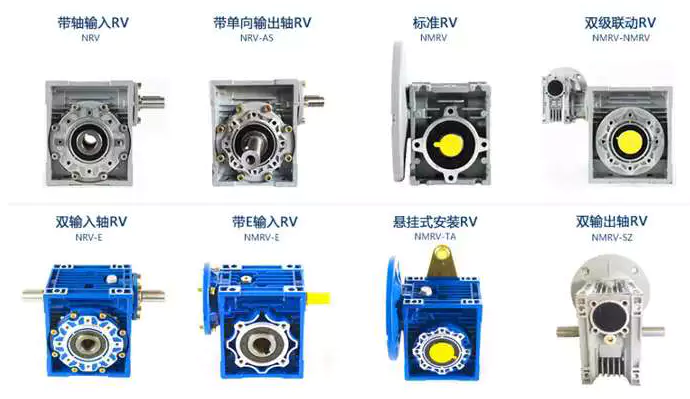Relevant Industries: Building Content Outlets
Gearing Arrangement: Worm
Output Torque: up to 5000Nm
Enter Speed: 750rpm -2000rpm
Output Velocity: 10-500rpm
Colour: Buyer Ask for
Housing Materials: Solid Iron
Shaft: Inline
Heat treatment: Quenching
Bearing substance: SKF,ZWZ
Packaging Particulars: Common export Packing(Carton Blanket+ wooden box)
Port: HangZhou or ZheJiang
WP series worm gearbox velocity reducer wpa speed reducer china wpa sequence worm gearbox worm gear transmission
Item FunctionWP stepper motor worm equipment/worm equipment speed reducer/AC worm gearbox1.Extensively employed in light-weight sector, good resistance to wearing, with high precision in dimensions, lower sound, sophisticated centric
running castings2. The housing is of robust hardness, compact structure3. Steady transmission, low vibration, big ratio, canbe matched with a variety of equipment
1.Housing:iron forged
2. minimal noise(<50DB) 3.Model:WPA 40-250,Ratio:10 to sixty 4.Effective and risk-free operating5.ISO9001,Factory price,OEM
six.Technological innovation Knowledge:
| Variety: | gearbox WPA |
| Product: | WPA forty-250 |
| Ratio: | one:10,15,twenty,25,thirty, High High quality Bicycle Cassette Road Bike Flywheel 8910 Velocity eleven-23T Bicycle Cassette forty,50,60 |
| Colour: | Blue/Silver Or On Customer Ask for |
| Content: | Housing: Die-Cast Iron cast |
| Worm Gear-Copper-ten-3# | |
| Worm-20CrMn Ti with carburizing and quenching, area harness is 56-62HRC | |
| Shaft-chromium steel-forty five# | |
| Packing: | Carton and Picket Scenario |
| Bearing: | C&U Bearing |
| Seal: | NAK SKF |
| Warranty: | 1 12 months |
| Enter Energy: | .06KW,.09KW |
| Usages: | Industrial Device: Foodstuff Stuff, Ceramics,CHEMICAL,Packing,Dyeing,Woodworking,Glass. |
|
IEC Flange: |
56B14, 63B14, 63B5, 63B5, 71B14,80B14 AND SO ON |
| Lubricant: | Artificial&Mineral |
Business Details
High quality handle
Packing& Manufacturing facility The us common Industrial sprocket metal sprocket and pinion for conveyor chain Supply
Packing Information: Normal carton/Pallet/Regular wood circumstance
Supply Particulars : fifteen-thirty operating times CZPT payment
Our Certifications
Related Merchandise
FAQ
one.Payment Time period: TT, L/C
two.Delivery time: about thirty days from obtain payment.
3.We accept personalized products as for each your unique need.
four.Xihu (West Lake) Dis.traces for the Assortment:Typically we can choose 1 equipment which is ideal for you with some informations from you,this kind of as ratio/motor velocity/mounting dimension/ out torque and many others.
five.If the least get volume is in excess of $10000, there are preferential.
Q1: What info should I explain to you to validate the item?
A:Product/Dimension, Transmission Ratio, Shaft instructions & Order amount.
Q2: What can i do if I don’t know which 1 I need?
A:Dont fret, Send out as a lot information as you can, our group will assist you uncover the proper 1 you are seeking for.
Q3: What is your solution warranty interval?
A:We provide 1 12 months warranty considering that the vessel departure day left China.
Qfour: Are you trading organization or maker ?
A: We are factory.
Q5: How extended is your supply time?
A: Normally it is 5-10 times if the products are in stock. or it is fifteen-20 days if the merchandise are not in inventory, it is according to amount.
Q6: Do you give samples ? is it totally free or further ?
A: Sure, we could provide the sample for free demand but do not shell out the price of freight.
Q7: What is your phrases of payment ?
A: Payment=1000USD, thirty% T/T in progress ,balance just before shippment.
If you have any other questions, remember to truly feel totally free to make contact with us as demonstrated under, you can simply click on the graphic under to make contact with me immediately.
Contact Us
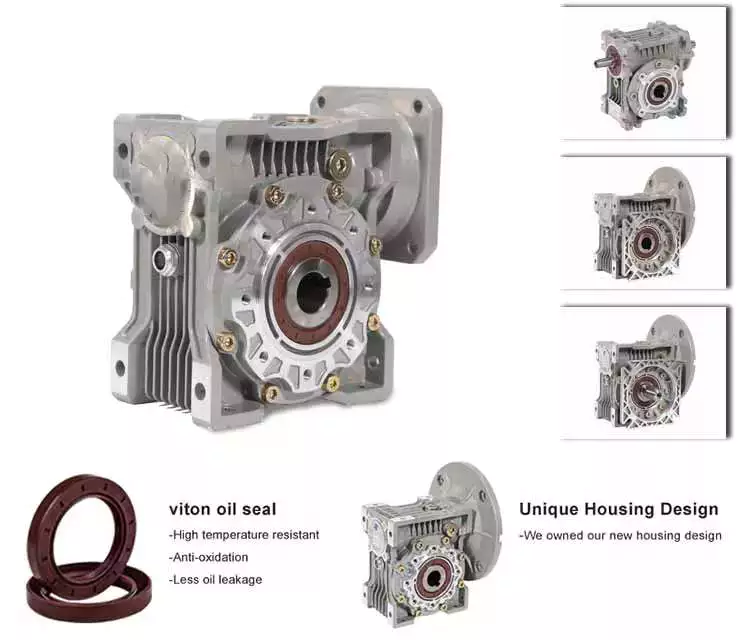
Worm gear reducer gearbox
A worm gear reducer gearbox is a mechanical device used to reduce the viscosity of fluids. It can be used in a variety of applications and is available in a variety of sizes. Read on to learn more about these devices. They come in different shapes, sizes and prices. Also, these products are very reliable.
Viscosity
A new study shows that polymers derived from worms reduce the viscosity of aqueous solutions. The researchers mixed the worms with water and then applied shearing force to the mixture. Polymer-filled solutions are more resistant to shear forces than simple liquids. This is because when the solution is sheared, the filaments become entangled with each other. When the solution is sheared, the filaments line up, reducing the viscosity of the solution.
The researchers then used live insects to study the polymer’s shear thinning properties. By measuring “worm activity”, the researchers could calculate the viscosity of the mixture. The researchers then altered the worms’ activity and measured changes in the viscosity of the mixture.
The PSMA13 precursor was synthesized from BzMA at 90 °C. The resulting PSMA13-PBzMA65 worms were studied using SAXS, 1H NMR and TEM. They were found to be highly anisotropic over a wide temperature range.
The efficiency of a worm gear reducer gearbox increases with the number of revolutions of the input shaft. Braking torque also increases with the viscosity of the oil. These three factors are used to determine the efficiency of a worm gear reducer gearbox. A worm gear reducer gearbox with a helical pinion on the motor shaft will achieve a 40:1 gear ratio. The combination of a 4 liter ratio helical primary gear with a 10:l worm secondary gear will achieve high efficiency and overload capability.
The PSMA13-PBzMA65 dispersion has the same effective viscosity at 20 degrees Celsius and variable temperature. The transition time is 0.01 Pa s, indicating good thermal reversibility.
Self-locking function
Worm reducer gearboxes have many advantages. This gear has a high capacity and can transmit a lot of power. It’s also very quiet. Its advantages also include a space-saving design. Another benefit of worm reducer gearboxes is their ease of lubrication and cooling. It is also an excellent choice for transmitting high power with high gear ratios.
The self-locking function of the worm gear unit ensures that torque is only transmitted in one direction. When the load peaks, the torque signal is disabled. Unlike conventional gear reducer gearboxes, self-locking worm gears are not interchangeable.
Self-locking worm gears are not suitable for high mass applications because the weight of the driven mass can overwhelm the gear. The large mass can cause a huge side load on the worm, which can cause the worm to break. To solve this problem, a self-locking worm gear train with special provisions can be designed to reduce the heat generated.
The self-locking properties of worm reducer gearboxes are helpful in many industrial applications. It prevents reversing, which saves money on the braking system. It can also be used to lift and hold loads. The self-locking function is very useful in preventing backing.
The self-locking function depends on the pitch diameter and lead angle. A larger pitch diameter will make the self-locking function easier. However, the lead angle decreases as the pitch diameter increases. The higher pitch diameter will also make the worm reducer gearbox more resistant to backlash.
Self-locking worm gears are also useful in lifting and hoisting applications. If the worm gear is self-locking, it cannot reverse its direction without positive torque.s This makes the worm gear ideal for applications where the worm must be lowered.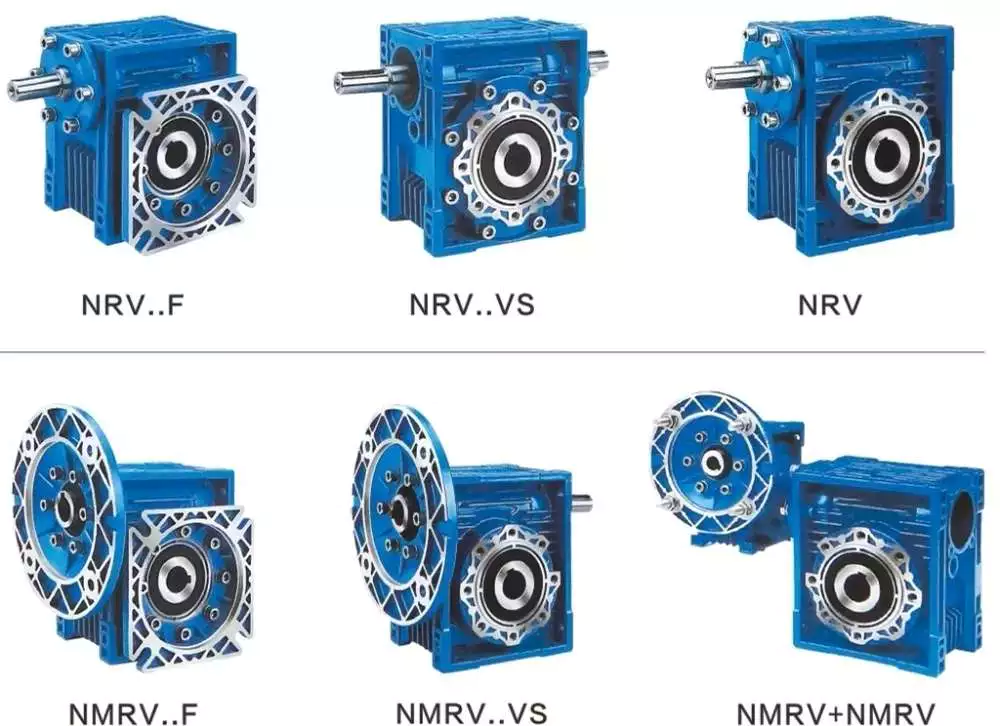
application
The worm gear reducer gearbox market is a global industry consisting of several sub-sectors. This report analyzes past and current market trends and discusses key challenges and opportunities in this market. It also highlights leading marketing players and their marketing strategies. Furthermore, the report covers important segments and provides information on emerging segments.
Worm reducer gearboxes can be used in a variety of applications, such as reducing the speed and torque of rotating parts. These gears are usually available as gear sets and seat units and are available in multi-speed designs. Some manufacturers also offer precision worms and zero-backlash worms for high precision reduction.
Typically, worm gears are used on vertical axes that do not intersect. Compared to other gear drives, they are inefficient but produce a lot of reduction. There are two basic types of worm gears: double envelope and single envelope. The difference is in how they work. When the two axes do not intersect, a double-enveloping worm gear is used.
In the industrial world, worm gear reducer gearboxes are the most popular type of reducer gearbox. They are known for their high torque output multipliers and high reduction ratios. They are used in many power transmission applications including elevators, safety gates, and conveyor belts. They are especially suitable for low to medium-horsepower applications.
Worm gears can also be used for noise control. Its unique shape and size make it suitable for tight spaces. They are also suitable for conveying heavy materials and the packaging industry. In addition, they have high gear ratios, which make them suitable for small and compact machinery.
cost
The cost of a worm gear reducer gearbox depends on several factors, including the type of worm used, the materials used to manufacture the equipment, and the number of users. The worm gear reducer gearbox market is divided into two types: vertical and horizontal. Furthermore, the market is segmented by application, including the automotive industry, shipping industry, and machinery and equipment.
Worm gear reducer gearbox is a popular type of reducer gearbox. They are available in standard and flush-type packaging. They feature C-side inputs for standard NEMA motors and multiple mounting positions to suit the application. For example, a soup factory can use the same hollow reducer gearbox in multiple installation locations.
Another application for worm gear reducer gearboxes is in conveyors. They provide torque and speed reduction to move products efficiently. They are also widely used in security doors that automatically lock when they are closed. Typically, these doors use two separate worm drives. In this way, they cannot be reversed.
The cost of a worm gear reducer gearbox is determined by several factors. Size and material are important. Worm gear reducer gearboxes can be made of aluminum, cast iron, or stainless steel. Its efficiency depends on its size and proportions. It is usually used as a retarder in low-speed machinery, but can also be used as a secondary braking device.
There are two types of worms: standard worm and double worm gear. Standard worms have one or two threads, and double worm gears have one left-hand and right-hand thread. A single-threaded combination will give you a 50 reduction ratio, while a dual-threaded combination will only give you a 25% reduction.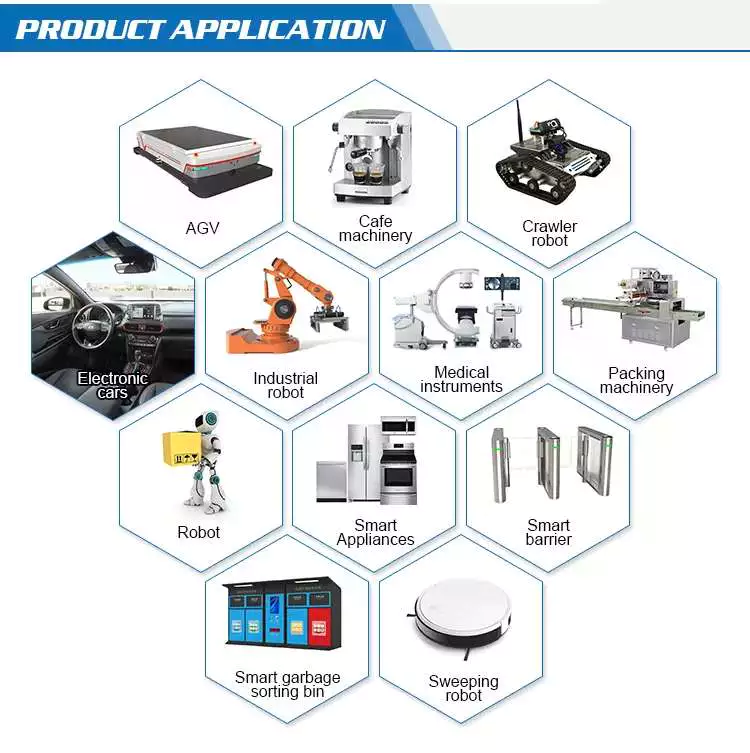
manufacturing
Agknx Transmission Ltd. manufactures premium worm gear reducer gearboxes with robust construction and premium case-hardened steel worms. They use phosphor bronze centrifugally cast rims and attach them to the output shaft in the center. They also feature dual-purpose bearings and a large overhang load margin on the output shaft. The high-quality reducer gearbox also has a full range of positive lubrication functions. This means that they do not need special attention when using low-speed shaft extensions.

editor by Cx 2023-07-04
